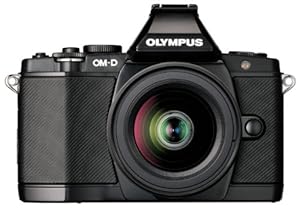Previously I went through some of the features and thought about the many benefits of the OM-D. And the fact is, I really was pondering whether or not I should stick with my Nikon system or ditch it for Micro Four Thirds.
I've always felt that my place in photography was a little bit different than most. One example of this is that for most photographers, portraits, weddings, travel etc.. the 70-200 or 24-70 range are perhaps the most important. Whereas for me, I always wanted the longer and longer and longer focal length, to get up close to the wildlife. So where some would ponder upgrading their 70-200 f/2.8 VR to the 70-200 f/2.8 VR II, I would contemplate if I should step up from my 300mm f/4 to a 300mm f/2.8 etc. Some would hold FX cameras in very high regard, but I always wanted the extra reach of the crop factor. Therefore a D300S replacement was my holy grail.
After pondering the OM-D for a while and trying not to get myself sucked into whats new, cool and popular. I decided I really should be looking at is what's best for the type of photography that I want to do. So what kind of photography do I want to do?
2012 was a year off, photography wise. Late 2011 brought the birth of my first child and all of 2012 was my wife and I learning how to be parents and adjusting to our new lives. Of course, I broke out the camera to get baby photos. But as far as nature photography goes, it was a quiet year. Over the course of that year I think my photography desires changed a little bit. I decided I wanted less of a focus on wildlife and a stronger focus on landscapes, night photography and time lapse. I also have become interested in travel photography. I don't travel as much as I'd like, but it's one thing that my wife and I really enjoy doing together. So that is a photographic opportunity I don't want to pass up.
So how would the OM-D fit into this slightly different role? I would say that it would have fallen into the roll wonderfully, with one exception. The fact that I didn't want to say good bye to wildlife photography altogether. I simply want to refocus my attention on landscapes as my primary subject. Although the Micro Four Thirds system does have the benefit of a 2x crop factor, it still falls short in autofocus and selection of quality super telephoto prime lenses. Now, what would happen if a micro four thirds 300mm f/4 lens came out? That would be the equivalent of a 600mm f/4? Wowsers! That would be pretty insane. It may not address the AF issues, but it should be known that the AF issues will be addressed over time.
In the end I decided to go with what's best for me now, not what could be best if this, this or this happened. And what's best for me now is a camera that has a feature set that would excel in landscape photography, night photography and time lapse. A camera that would be good for photographing my now 1 year old boy as well as be a good travel camera. A camera that would still be able to become an excellent wildlife camera when paired with one of the many great super telephoto lenses available.
So what did I choose? Stay tuned



